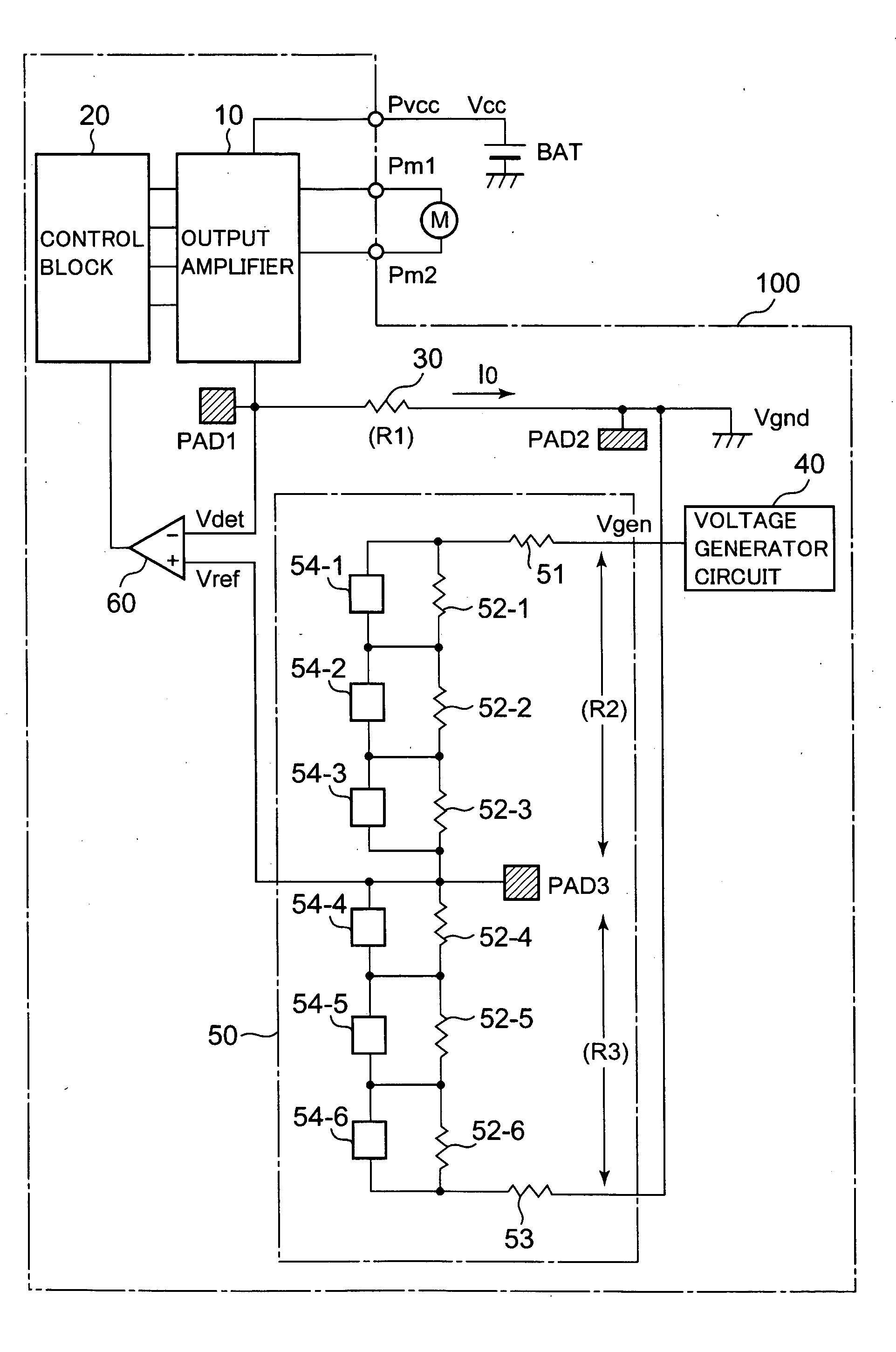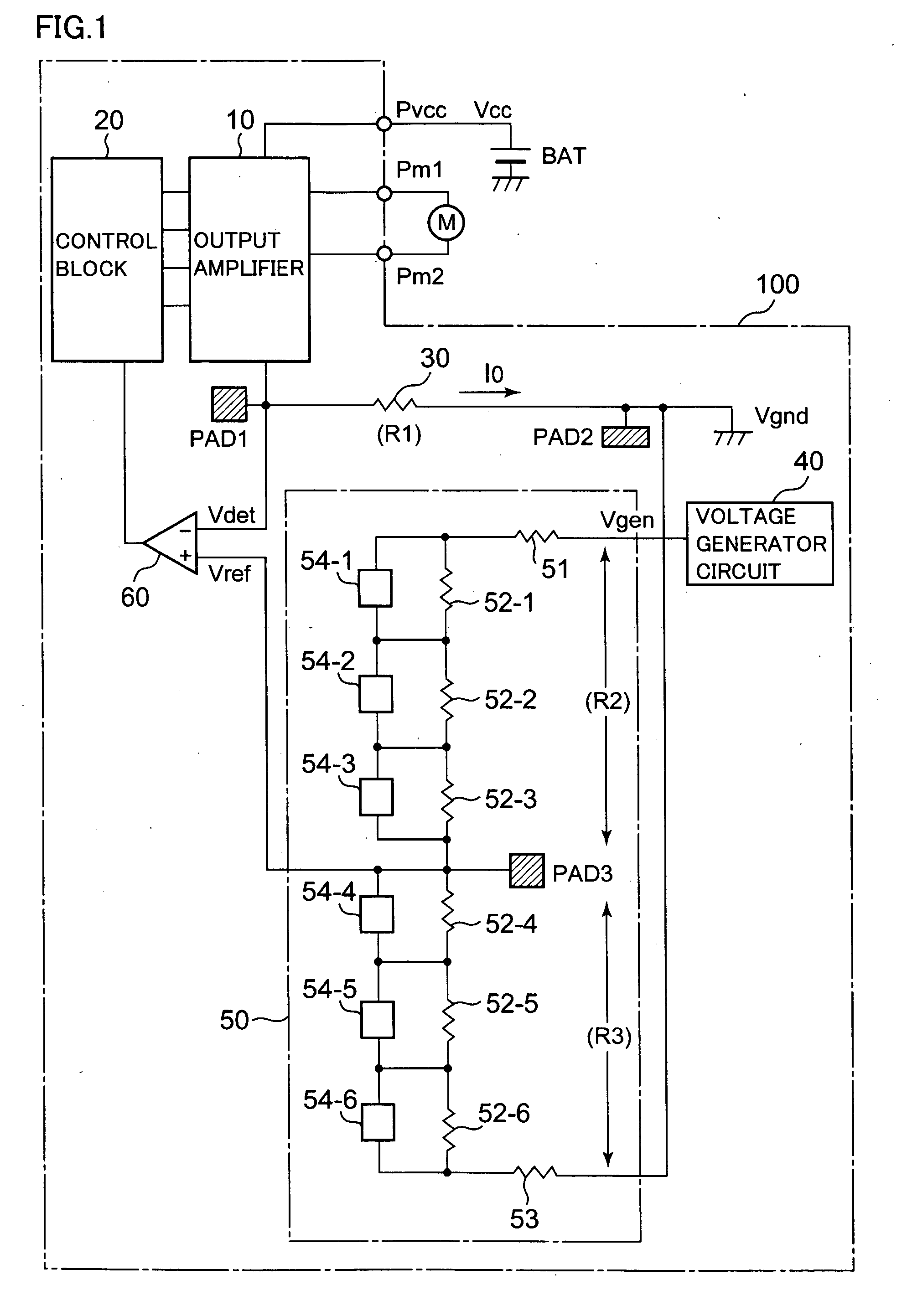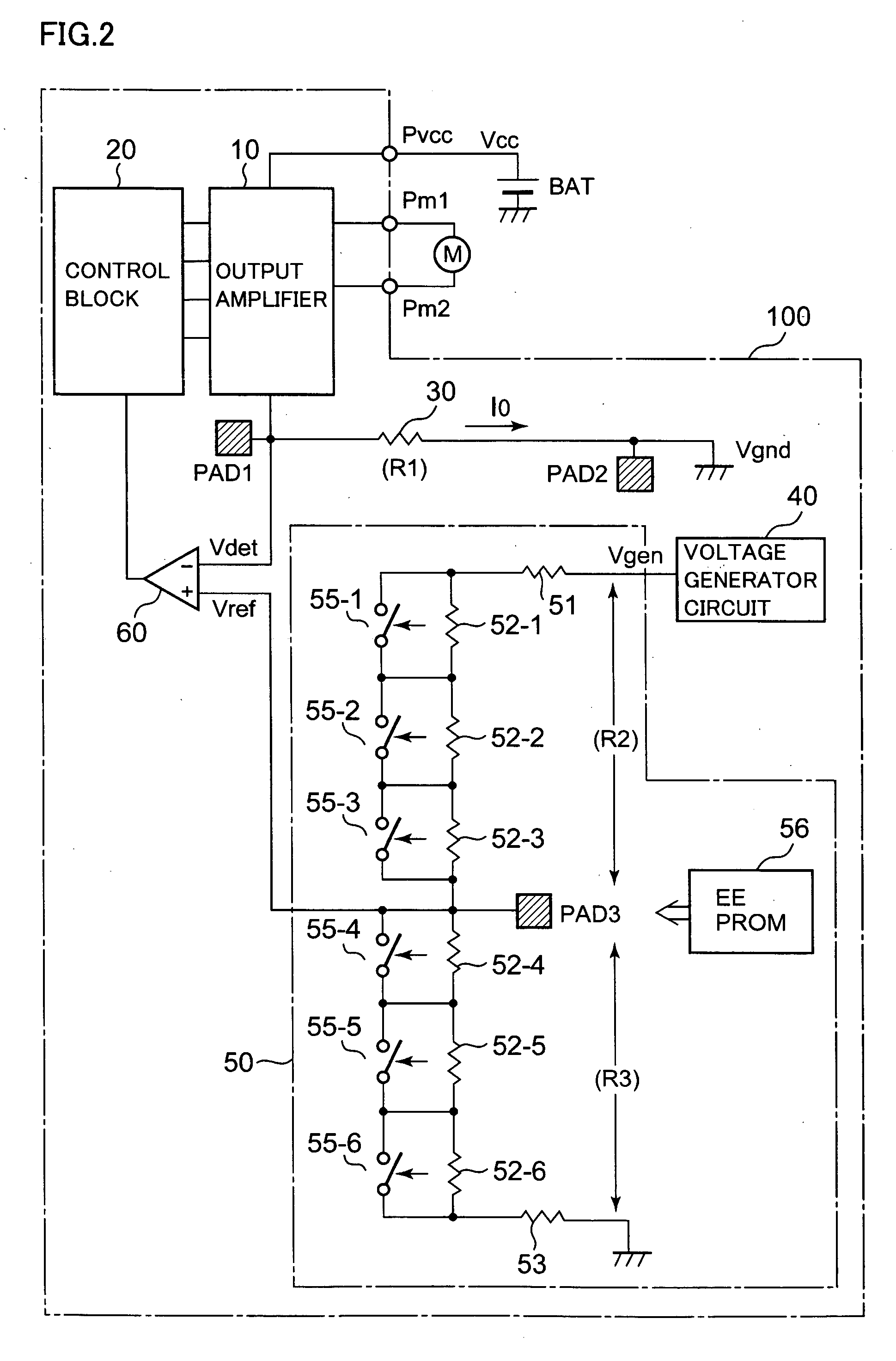Load-driving semiconductor device that detects current flowing through load by resistor
a current-detecting and resistor-based technology, applied in the direction of pulse manipulation, instant pulse delivery arrangement, pulse technique, etc., can solve the problem of large size of current-detecting resistor, and affecting the operation of the load-driving device. the effect of reducing the space required to serve as a load-driving device and reducing the cos
- Summary
- Abstract
- Description
- Claims
- Application Information
AI Technical Summary
Benefits of technology
Problems solved by technology
Method used
Image
Examples
first embodiment
[0040]FIG. 1 shows a structure of a load-driving semiconductor device according to the present invention.
[0041] In FIG. 1, a supply voltage Vcc is input from a battery power supply BAT to a load-driving semiconductor device 100 via a power supply input terminal Pvcc. From load-driving semiconductor device 100, an output voltage and an output current are supplied to a motor M, which serves as a load, via output terminals Pm1 and Pm2.
[0042] An output amplifier 10 includes, for example, an output transistor circuit using a transistor. The output transistor circuit is controlled in accordance with a control signal coming from a control block 20. Via the transistor circuit controlled in accordance with the control signal, the output current is supplied from output amplifier 10 to motor M. The output current Io passes through a detecting resistor 30 to flow into a ground voltage Vgnd. Since a resistance value of detecting resistor 30 is represented as R1, a detected voltage Vdet is repre...
second embodiment
[0060]FIG. 2 shows a structure of a load-driving semiconductor device according to the present invention. In FIG. 2, switches 55-1 to 55-6 are used instead of the disconnectably configured connecting portions of trimming circuit 50 in FIG. 1, namely, fuses 54-1 to 54-6. A non-volatile storage 56 is provided to serve as a switch control circuit for storing information for setting switches 55-1 to 55-6 to an on or off state and controlling them. For switches 55-1 to 55-6, a MOS transistor, a bipolar transistor and the like can be used. For nonvolatile storage 56, an Electrically Erasable and Programmable Read Only Memory (EEPROM), a Ferroelectric Random Access Memory (FeRAM) and the like can be used.
[0061] Nonvolatile storage 56 stores information for controlling switches 55-1 to 55-6 to an on or off state for trimming in accordance with the measured resistance value of detecting resistor 30 as in the process of trimming reference voltage Vref in FIG. 1. Each of switches 55-1 to 55-6 ...
third embodiment
[0062]FIG. 3 shows a structure of a load-driving semiconductor device according to the present invention, providing a more specific structure of control block 20 and output amplifier 10 in FIGS. 1 and 2.
[0063] In FIG. 3, trimming circuit 50 is shown to have two components, namely, adjustable resistors (their resistance values are represented as R2 and R3).
[0064] Generated voltage Vgen from voltage generator circuit 40 is converted by a voltage converter circuit 41 and supplied to trimming circuit 50. In this example, voltage converter circuit 41 is composed of a 6-bit D / A converter 42 and a voltage follower 43. Generated voltage Vgen is converted to a prescribed voltage in accordance with a digital command signal Din input to D / A converter 42, and then output from voltage converter circuit 41.
[0065] By providing voltage converter circuit 41, a voltage can be adjusted (trimmed) not only in trimming circuit 50 but by digital command signal Din. Therefore, reference voltage Vref can ...
PUM
 Login to View More
Login to View More Abstract
Description
Claims
Application Information
 Login to View More
Login to View More - R&D
- Intellectual Property
- Life Sciences
- Materials
- Tech Scout
- Unparalleled Data Quality
- Higher Quality Content
- 60% Fewer Hallucinations
Browse by: Latest US Patents, China's latest patents, Technical Efficacy Thesaurus, Application Domain, Technology Topic, Popular Technical Reports.
© 2025 PatSnap. All rights reserved.Legal|Privacy policy|Modern Slavery Act Transparency Statement|Sitemap|About US| Contact US: help@patsnap.com



